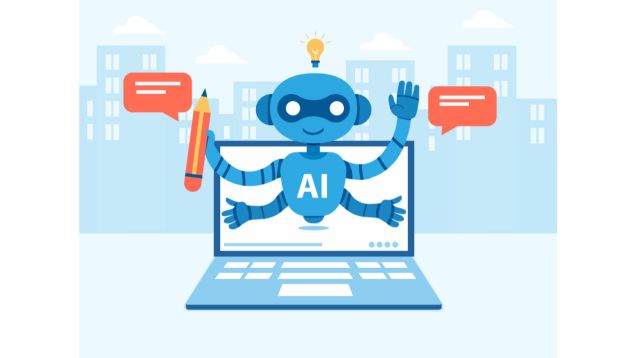
7 Ways AI Is Changing SEO Tools & How to Use Them in 2025
2025-07-22 04:41:06
By Admin
No Comment
SEO has come a long way since the early 2010s. Back then, most SEO tools relied on fixed algorithms, historical data, and a lot of manual effort. Marketers had to spend hours digging for keywords, analyzing competitors, and making small tweaks to improve rankings.
However, now in 2025, Artificial Intelligence is changing everything. It’s no longer just a trendy term, but the driving force behind a new generation of SEO tools.
Now AI is helping marketers work faster, make better decisions, and get stronger results with less guesswork.
What This AI Shift Means for Your SEO Strategy
It means you now have access to tools that go beyond tracking rankings or suggesting keywords. AI can help you understand user intent, generate content outlines, and optimize pages with remarkable speed and precision.
The next section explores seven practical ways AI is transforming SEO tools and how you can use them to improve your SEO results.
Essential AI-Powered SEO Practices for Modern Marketers
1. Smarter Keyword Research
Keyword research has always been a pillar of SEO. But AI has made it more intelligent.
So, instead of generating a basic list of terms, AI-powered keyword research tools now analyze search intent, user behavior, trending queries, and even semantic search patterns. They recommend long-tail keywords based on voice searches, questions, and location-specific variations, giving you more nuanced targeting options.
How to use it:
Try tools like SEOWagon, Ahrefs, or Semrush Keyword Magic to generate clusters of keywords that match user intent. When selecting keywords, look for opportunities with lower competition but high relevance.
2. Automated Content Briefs
Creating high-quality content starts with a solid content brief. In the past, this meant hours of manual research. But AI now automates this entire process.
By scanning top-ranking pages, AI tools identify optimal headers, word counts, relevant keywords, and backlink suggestions. This means writers get a head start with data-backed roadmap.
How to use it:
Tools like Frase, Quillbot, or Quattr can generate automated SEO content briefs tailored to your topic and industry.
3. Competitor Gap Analysis at Scale
Before, analyzing competitors used to involve one page or site at a time.
Now, AI can scan thousands of pages across your niche to pinpoint exactly where your content is lacking.
These tools highlight problems including keyword gaps, missing backlinks, content freshness issues, and structure differences, making it easier to outperform your competitors.
How to use it:
Use platforms like RankingGap or MarketMuse to compare your content against top-ranking competitors and discover unexplored opportunities.
4. SEO-Friendly AI Content Generation
Over the past few years, AI content generators have matured dramatically.
Nowadays, they don’t just spin filler content; they now create SEO-optimized content based on tone, structure, and ranking factors.
With tools like Rewritertools, Jasper, or KoalaWriter, you can create blog posts, product descriptions, and landing page content that includes keywords naturally and adapts to Google's evolving ranking systems.
How to use it:
Use AI to draft initial content and then refine it manually. Combine AI speed with human creativity for best results.
5. Advanced Technical SEO Crawling
AI makes technical SEO more manageable. AI-powered crawlers identify errors like broken links, duplicate content, slow-loading pages, and mobile UX issues far more efficiently.
Even better, AI doesn't just detect issues, it suggests fixes based on priority and potential impact.
How to use it:
Tools like Screaming Frog, Lumar (originally known as DeepCrawl), or Sitebulb offer AI-assisted audits and recommendations.
6. Personalized User Experience Insights
AI enables SEO tools to go beyond Google and think about the end-user experience.
By analyzing real-time data, AI can suggest improvements that enhance user engagement and reduce bounce rates.
This includes layout suggestions, content personalization, CTA optimization, and behavior prediction based on machine learning.
How to use it:
Use AI UX tools like Microsoft Clarity, Hotjar, or Neurosinc to study how users interact with your content, and optimize accordingly.
7. Optimizing for Visual and Voice Search
With the rise of voice assistants and visual search (like Google Lens), AI-driven SEO tools now focus on multifaceted optimization.
They analyze image alt text, voice search phrasing, mobile search patterns, and schema markup to help you rank for more than just text queries.
How to use it:
Focus on natural language optimization, image SEO, and structured data using tools like Microsoft Clarity, AnswerThePublic, or Moz Bar.
The AI Revolution in SEO Has Begun
The future of SEO is here, and it’s backed by AI. AI tools make SEO more efficient and insightful, whether it’s about research or execution.
But remember, AI is a tool, not a replacement. The best results still come from blending AI's speed with human strategy.
By integrating AI properly into your SEO workflow, you can dramatically improve your search rankings and organic traffic.



